The results and assessment of a three week ride. — Photography and words by Aaron W. Hautala
When I received the opportunity to test ride the Salsa Bucksaw I froze. Then, when I received the test bike it was clear this wasn’t just off-the-shelf Bucksaw. I had in front of me a super-freak Bucksaw.
While a full length review could be made on every component installed on this bike, I’m going to selectively focus my attention on the Salsa Bucksaw. In a forthcoming story we’ll get a closer look at the Whisky No.9 70mm wide carbon fat rims, Whisky No.7 760 flat bar, and the 45NRTH Vanhelga.
Not just rear suspension, fat bike specific Split Pivot™ rear suspension. What excited me first about the Bucksaw was the fact that it offered rear suspension, a feature I hadn’t previously had the opportunity to experience on a fat bike. Prior to the Bucksaw, I rode the Framed Carbon Alaskan prototype, featuring the Rockshox Bluto front suspension fork. After that short two hour ride on the Alaskan, it was clear to me that front suspension on a fat bike was something I personally wanted to explore further.
During my test rides on the Bucksaw over the next three weeks I fielded many questions including “why would rear suspension, or suspension in general, be needed on a fat bike?” “Don’t the tires inflated at a low psi provide all the cush you need?” The answer to these questions could be “yes” in consideration of a fat bike designed for floatation, crawling, and back country adventuring. My experience was I enjoyed the Bucksaw ride at a tire pressure of 12-15psi with downhill traction my fully rigid fat bike does not feature.
On the interweb you’ll find countless stories and definitions of what makes Dave Weagle’s Split Pivot™ rear suspension ooze with awesome-sauce. Salsa partnered with Dave on the fatbike specific rear suspension for the Bucksaw. In the brevity of this story, I will not wax poetically in regard to how exactly the rear suspension technically works, as you can read content previously published here or view an explanation video here.
The bottom line to Split Pivot™ and the Bucksaw is the rear suspension provides better traction (in comparison to a rigid rear end) to the rear tire while descending over uneven rocks, roots, and jumps. As I test rode Bucksaw in Cuyuna, many of our downhill descents are buttery smooth. However, we do have segments featuring randomly placed rocks and shale. Within these sections of Tugger, Mucker Mountain, and Sand Hog, I dropped the dropper post, shifted my weight to the rear of the bike, and let the Bucksaw, buck.
And it did.
Using a smart phone app to measure my time made it mathematically clear that my uphill time was slower than average on the Bucksaw in comparison to my summer full suspension mountain bike. However, on the downhill, that time was made up quickly. After riding the Bucksaw for the first time on Mucker Mountain, my total time was :01 slower than my personal best time (including both the climb and descent). The inspiring news is I wasn’t pushing myself for a fast time. What you will experience on the Bucksaw when riding downhill is you’ll have the ability to ride quicker because the bike will feel under control. Why does the bike feel under control? The Split-Pivot rear suspension in concert with the rear 4.0″ 45NRTH Vanhelga fat bike tire remains in contact with the dirt, rocks, and roots, which equals improved contact/grip, trail sensitivity/control. That added control equaled a better downhill ride on the Bucksaw, both in total time, and ride quality.
Fun factor.
If you like to shred single track, you’ll appreciate Bucksaw, and you’ll also have inspired confidence on the bike where previously you might have slowed down, or got into trouble. With the added width of the fat bike tires you can lean the bike over in the corners, riding a bike starts to take on the same momentum of alpine skiing, that’s excellent.
If you love to go back country exploring, Bucksaw can. I took out Bucksaw on a 600 acre parcel of County managed recreational land. For the most part, this area was full of old logging roads and ATV trails. Bucksaw excelled even while riding through what us single trackers would likely not want to ride. Bucksaw made it fun, made it an experience.
Bucksaw is a smooth operator, it minimizes the bouncing in the rear of the bike so you can enjoy the ride when pedaling through nature. One of my favorite back country Bucksaw rides was a loose-soil logging road going straight up a hill. Likely only forestry equipment and 4×4’s were able to climb this road. A bike, traditionally, has no business even attempting this climb. But Bucksaw did, and not only did I climb to the top of the hill without putting a foot down, I never lost traction. When I reached the top I looked back to see my fellow cyclists walking their bikes up the hill. There was an Olympic spirit I felt in that moment.
Winter ready?
My recommendation is that the Bucksaw is not an ideal choice for winter fat biking. Nor did Salsa design the Bucksaw for intentional winter use. Reasons to keep the Bucksaw in winter storage are :
1) Suspension can ride rough when the temperature dips below freezing.
2) Salt has the ability to do disastrous things to the front fork and the rear suspension.
3) Winter trails typically feature a smooth riding surface where the additional suspension will have minimal payback for the increased weight.
Over the course of riding the Bucksaw for three weeks I have only three minimal gripes on my wish list for 2015:
1) Reduce weight. As the bike I tested already had tubeless tires and carbon rims/handlebars, it’s hard to look elsewhere than the frame for weight saving opportunities. I understand this is a fat bike, and a full-suspension fat bike, but, I’m writing this review in context of what it would take for myself to eventually replace my summer specific full suspension mountain bike with the Bucksaw.
As I wrote this story, I silently hoped that some day a carbon frame would eventually find its way to the Bucksaw. That day has already come. The Bucksaw is now available in a carbon frame. It looks to have a reduction in weight of 300 grams and I’d expect an improved ride quality on the vibration dampening carbon. I look forward to a ride on the Carbon Bucksaw in 2015!
2) Lockout for the rear shock. It would be nice to have a remote on the cockpit to lock out the rear shock.
3) The visual appearance of the bottom bracket/pivot area within the frame. In dialog with Salsa, it was noted that this area was needed to use existing Split Pivot frame parts to achieve the bottom bracket/pivot cluster on the Bucksaw. In this case using existing bottom bracket forgings from the Spearfish/Horsethief models freed up budget to explore items like carbon seatstays. My gripe here is the main frame has rounded edges, the seat stays are rounded, and the chain stays and bottom bracket/pivot area are edged. It’s nice to have consistency throughout, that’s a small gripe that will not affect performance of this bike. I did notice however on the new carbon Bucksaw frame this bottom bracket/pivot area was much improved from this aesthetic point of view.
Buying advice.
Honestly, if I would have had the opportunity to demo this bike one week earlier I likely would have purchased the Bucksaw (In the Finnish blue color) in place of my new summer specific full-suspension mountain bike.
The Bucksaw is good, and if I quit enjoying IPA’s after my rides I likely could climb hills better. Blame the bike? Blame the rider? Neither. Let’s instead thank Salsa Cycles for bringing the fat bike world to a new place, a fun place, a place no other fat bike has gone before.

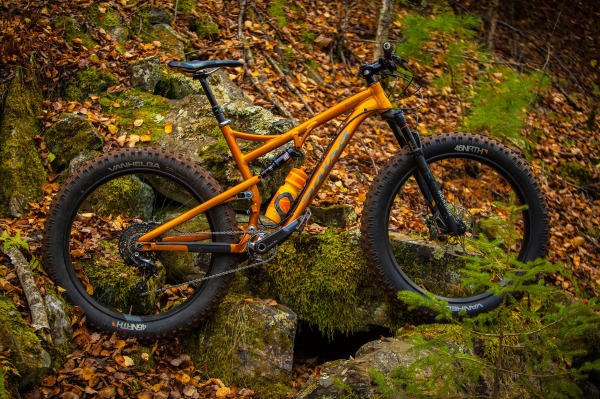
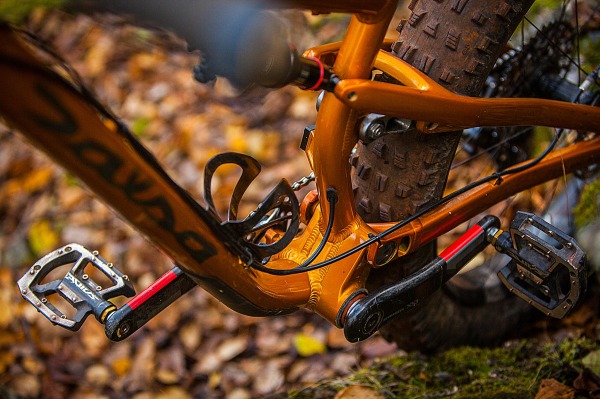
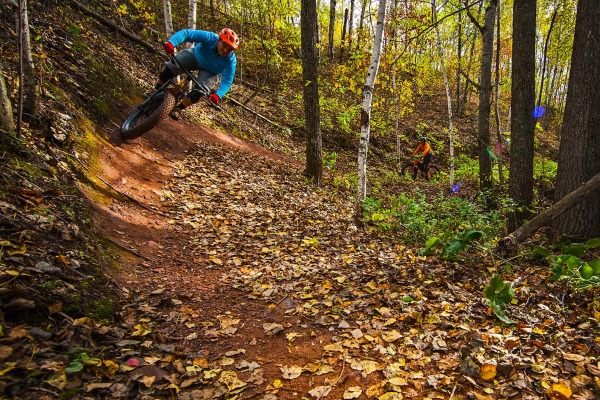
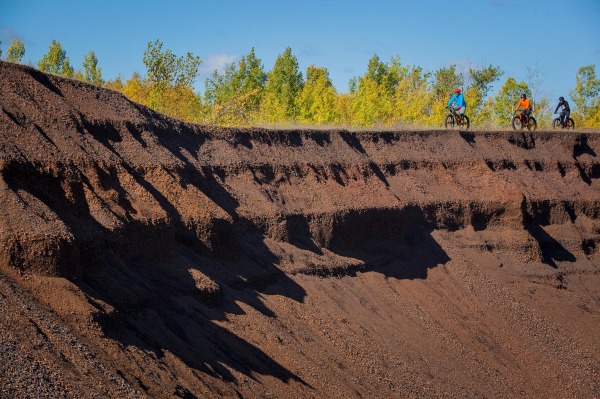
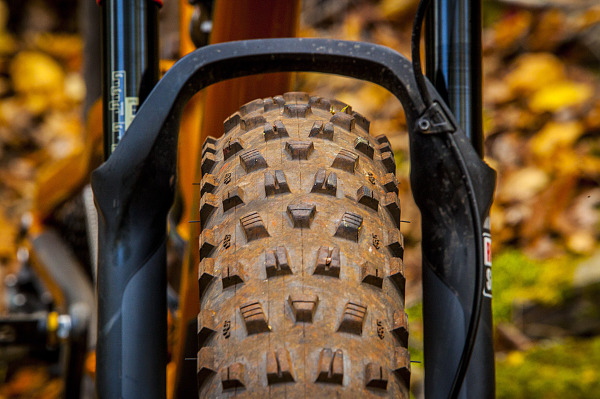
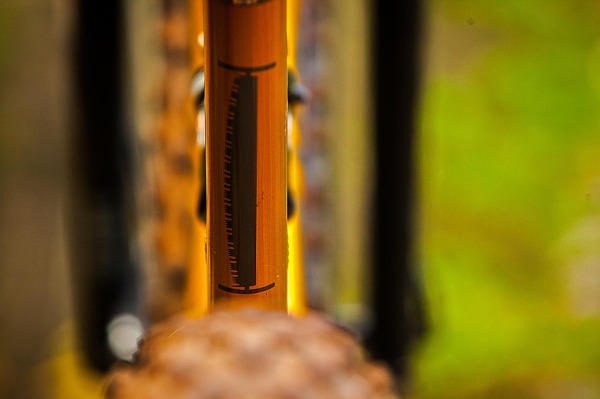
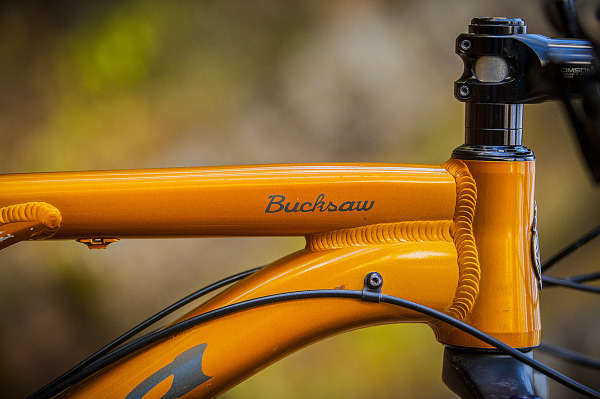
Great write up. Are you going to do a review on the Framed Alaskan that you rode prior to the Bucksaw?
We’ll be reviewing the Alaskan Carbon and Alloy coming soon…
Likes those tires.
Nice piece, really made me reconsider full sus fat.
In terms of weight, would a 29+ sibling be any improvement?
I would love to own one of these. It must kick ass on loose, rocky trails.
I just bought a Bucksaw 2 for use on the loose rocky trails we have in central Texas. Think long stretches of nothing but loose 3-5″ rocks just waiting to throw you off your line accompanied by sandy sediment stretches and stair step rock gardens in the flash flood zones. This bike is so much fun to ride on the really loose knarly stuff that it has opened up places I never would dare to take my 29er. Seriously, it turned a trail system I hated to ride (Government Canyon state park) into one I can’t get enough of… It changes the ride dynamics that much!